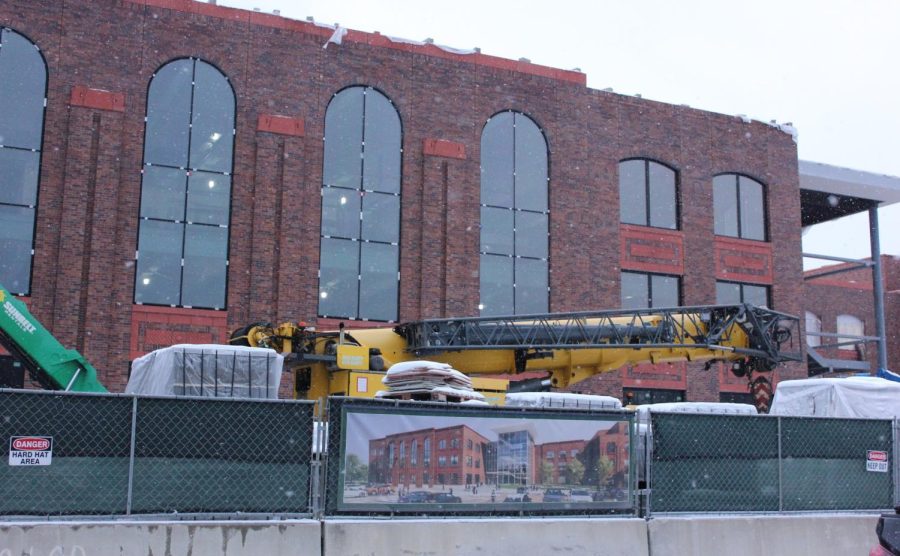Winnetka campus construction project strives to be energy efficient
New Trier district works to improve sustainability and reduced energy
As the new addition on the Winnetka campus enters its last phase of construction, New Trier is aiming for the “Gold” LEED certification on the project.
Much like the 2017 construction project, Denise Dubravec said that this new addition is designed according to LEED gold standards.
“The District uses sustainable practices to the extent possible during construction, including the recycling of the materials we demolish, and the selection of materials to build the new building that minimize environmental impact” said Dubravec.
According to Physical Plant Services Facilities Manager Steve Linke, in order to meet LEED standards, they need to recycle a certain percentage of the demolished materials, purchase materials that are made of recycled goods, and put waste in local landfills. The more a project recycles, the higher the LEED score.
Linke also notes that, “all of our equipment we are using is high efficiency.”
The “Gold” LEED category requires an overall score of 60- 79 points. The highest category is “Platinum”, where a project must earn at least 80 points. Other than using recycled materials during the construction to meet these standards, the new addition is designed to be energy efficient in the future as well.
According to Dubravec, New Trier is replacing old light fixtures to save energy, as well as replacing old steam boilers.
Linke said that the complex they tore down for this construction was heated “with steam, which is really inefficient. The new building will be heated with hot water boilers.”
New Trier is also tying the new construction’s air conditioning system to the existing water cooling system used in the rest of the building, replacing older roof-top A/C units. All of these improvements are aiming to reduce daily energy usage from the school, and will hopefully reduce New Trier’s carbon emissions.
Linke added that they are updating the restroom appliances in the east side of the building to lower-flow sinks and toilets. The rest of the building already has these improvements.
Making the new addition eco-friendly is just one step to New Trier becoming more environmentally friendly across both campuses. Future plans to reduce the carbon footprint includes adding alternative energy sources, like solar panels, to both campuses. This summer,
New Trier is adding solar panels to the Northfield campus. These are estimated to compensate for 40% total energy usage there, and they will be able to buy significantly less energy from Com-Ed.
Adding solar panels at the Winnetka campus has proven to be more costly though the roof will be able to accept them once the construction is done. Winnetka has its own generating station- meaning it doesn’t use Com-Ed for its power like Northfield does. Because of this, it doesn’t get the same incentives as Northfield-making the transition to solar at that campus more expensive.
Linke says that, “Com-Ed has all kinds of incentives to add solar to your house or your business. The Village of Winnetka does not have those same kinds of incentives yet, but we are working with the Village to find out how to make that happen.”
The construction industry makes up for 13% of carbon emissions annually, with building operations, like lighting, heating and A/C, contributing an additional 27% of total global emissions, making cutting down pollution on construction an important step to a healthier environment.
Over the past 5 years, New Trier has been making smaller improvements, which Dubravec says are helping reduce electric and natural gas usage. Some of the projects that have been done involve replacing motors, boilers, and lights around the school to more energy efficient versions.
This new construction will give students two new gyms, a workout facility, more classrooms and new student support spaces. According to Dubravec, the building was designed with learning-conductive design.
“The spaces will be light, open and welcoming like the classrooms on the west side of campus, which studies have shown creates an environment that is more conductive to learning”
The expected completion date of this project is the end of July 2023, so students will be able to enjoy these new amenities next year.







































